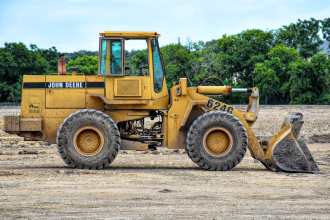Recording studios are magical places where the art of music production comes to life. Historically, they have evolved from simple rooms designed solely for capturing live performances to sophisticated technological environments that push the boundaries of sound. Today, recording studios are complex setups that blend traditional sound engineering techniques with cutting-edge technology, playing a crucial role in the music industry. In this read, we are going to delve into the interesting world of recording studios, exploring their history, anatomy, and the ever-evolving landscape they navigate in the digital age.
The Early to Modern Days of Recording Studios
As with most things, recording studios like thelockup.ie started off simple. Back in the day, we would record music in basic setups, but as time went on, professional studios emerged. In the 90s, they implemented multitrack recording and fancy soundproofing to make music sound better than ever. Recording studios have changed a lot since then. We have transitioned from old-school analog to digital recording, meaning music can be made using computers rather than big machines. This has enabled more people to showcase their art.
What are the Different Types of Recording Studios?
There are three primary types of recording studios:
1. Commercial Studios
These are professional recording spaces equipped with top-tier recording equipment and services. Commercial studios typically feature soundproofed rooms, advanced mixing consoles, and specialized gear essential for producing high-quality professional recordings.
2. Home Studios
As the name implies, these setups are usually found in an individual’s home. They are easy to set up and don’t cost a fortune, making them appealing to novice musicians, voiceover artists and those on a budget.
3. Mobile Studios
These are portable recording setups designed to capture high-quality audio on location. This makes them perfect for recording live performances and events wherever they occur.
What Equipment is Needed for Recording Studios?
Recording studios need specific equipment to create high-quality recordings. Some of the key components include:
(i) Microphones
Microphones capture sound and transform it into electrical signals, which are crucial for recording vocals, instruments, and other audio sources.
(ii) Mixing Consoles
Mixing consoles are essential for blending and balancing multiple tracks in a recording. They allow the sound engineer to fine-tune the levels of each track, ensuring a harmonious mix.
(iii) Digital Audio Workstations (DAWs)
DAWs are sophisticated computer programs used for recording, editing, and producing audio files. They are indispensable in modern recording studios, allowing artists and producers to manipulate recordings and craft high-quality audio productions with precision.
(iv) Studio Monitors
These are specialized speakers engineered for recording studios to deliver precise sound reproduction. This allows sound engineers and producers to monitor the true quality and detail of their recordings, ensuring fidelity in sound production.
(v)Acoustic Treatment
Acoustic treatment involves modifying a recording space to optimize sound quality. This is achieved through the use of sound-absorbing materials, such as panels and diffusers, which minimize echoes and reduce undesired noise. This, in turn, enhances the clarity and accuracy of recorded audio.
What are the Different Recording Studio Services?
Recording studios provide an array of services, including:
(i) Recording
This service encompasses utilizing a recording studio’s facilities to capture music or other forms of audio content.
(ii) Mixing
Mixing services involve using a mixing console or digital audio workstation to balance and refine the individual tracks within a recording. The aim is to ensure a harmonious blend of sounds.
(iii) Mastering
Mastering services entail the final processing steps to prepare a recording for distribution. This includes adjusting levels, equalization, and compression to ensure a polished, professional sound.
(iv) Audio Restoration
Audio restoration services focus on repairing and enhancing audio recordings by implementing techniques such as noise reduction, de-clicking, as well as de-humming to eliminate imperfections and restore clarity.
What is the Future of Recording Studios?
The future of recording studios hinges on innovation and adaptation. Studios are embracing the digital age by offering hybrid recording options. This allows musicians to leverage the benefits of both worlds: recording remotely using their own equipment while still accessing the expertise of studio engineers for mixing and mastering.
Others have been exploring the potential of new technologies like immersive audio (3D audio), which creates a three-dimensional soundscape that engulfs the listener. Virtual reality recording has also shown exciting possibilities, allowing musicians to record in virtual environments that inspire creativity.
In addition to providing recording services, studios are evolving into creative hubs, providing additional services like music production mentorship, where aspiring artists can learn from established professionals. Artist development programs can help musicians navigate the industry, while content creation services cater to the growing demand for high-quality audio for online platforms like YouTube and social media.
Conclusion
To conclude, recording studios are still fundamental to music production. Despite technological advancements and shifts in the industry, they remain places where raw musical ideas are transformed into polished productions. As technology progresses, studios will need to keep up, but their essence as creative sanctuaries for artists and engineers will endure.













